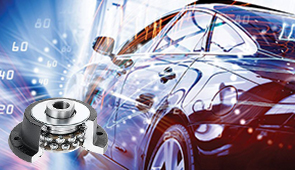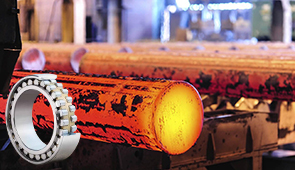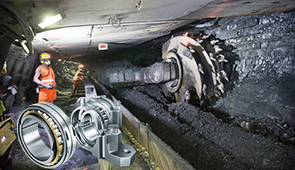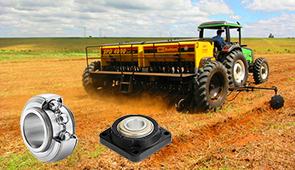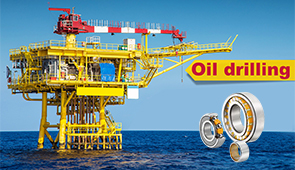Unlocking the Secrets of Miniature Ball Bearings: Precision and Performance
Miniature ball bearings are the unsung heroes of countless modern technologies, playing a pivotal role in the seamless operation of precision mechanisms across industries. From medical devices and aerospace systems to robotics and consumer electronics, these compact components deliver exceptional performance where accuracy, durability, and efficiency are non-negotiable. Yet, despite their widespread use, the intricate engineering and innovative design behind miniature ball bearings often remain overlooked. This article aims to lift the veil on these mechanical marvels, exploring how their precision and performance enable the advancement of cutting-edge technologies. Whether you’re an engineer, a designer, or simply curious about the mechanics shaping the world, this guide will provide valuable insights into the secrets that make miniature ball bearings indispensable.
What Are Miniature Bearings and How Do They Work?

Understanding the Basics of Miniature Ball Bearings
Miniature ball bearings are used in many machines for rotational or linear motion and have been meticulously designed to provide minimal friction. These compact bearings are made up of an inner ring, outer ring, a cage system that separates the balls (spherical rolling elements), seals or shields for contamination protection, and a series of rolling spheres (balls). Depending on particular needs, the materials used during manufacturing are stainless steel, chrome steel, or occasionally ceramic.
These bearings operate by transferring loads between the inner and outer rings using the rolling elements, which greatly reduces friction compared to direct contact. Moreover, these bearings can skillfully accommodate axial and radial loads, all while providing versatility. With an approximate diameter ranging from a couple of millimeters to several dozen, ball bearings are deemed high-precision due to their extensive impact on ensuring reliable, efficient, and seamless movement across myriad applications.
With the updates in laser machining and surface treatment processes, the durability and operational efficiency of miniature ball bearings have increased. The advancements are important for precision and reliability, which are the guiding forces in sectors such as aerospace, robotics, and medical devices. Miniature ball bearings enable next-generation innovations on micro and macro scales with their unparalleled longevity, low torque, high-speed capabilities, and other features.
The Role of Precision in Miniature Bearings
Critical applications, super important for the performance, reliability, and flexibility of miniature ball bearings, are affected directly by precision. These components can be rotationally accurate under strain due to the set-dimensional tolerances of +/- 1 micron to sub-micron levels. With this precision, noise and vibration are at a minimum, something very useful in high-speed settings like aerospace instrumentation and medical diagnostic machinery.
Further development in producing technologies like CNC machining and laser measurement systems increases the possibility of tighter tolerances and consistency across production batches, enabling advancements to allow uniformity. Additionally, precision in materials adds grade stainless steel or ceramic hybrids helps lessen wear, adds strength against heat, and defends against corrosive or extreme areas. These features are pivotal in robotics, which requires flawless performance for prolonged periods.
With the integration of high precision design, the use of advanced lubrication systems also helps to further reduce friction aiding higher efficiency for systems that require the intake of minimal energy. As time progresses and changes technology, precision in miniature ball bearings will establish new industry standards, with advancement enabling jaw dropping reliability and accuracy cutting across several technology and industrial fronts.
Common Applications for Miniature Bearings
Miniature bearings are specifically designed to provide optimum functionality in precision medicine and surgical robotics, and ensure unmatched levels of accuracy, reliability, and durability in dental surgical tools. Miniature bearings have extensive applications in the field of medicine, such as diagnostics, dental drills, and robotic surgeries to enable effortless rotation with very little friction. In aerospace, they form an integral part of satellites, gyroscopes, and satellite instrumentation. Miniature bearings facilitate extreme operational accuracy across harsh conditions.
Compact and efficient designs in stepper motors, hard drives, and even ventilation fans make use of miniature bearings. Precision instruments, including and not limited to telescopes and micrometers, rely on miniature bearings for smooth rotational bearings while ensuring flawless measurements. Industrial automation systems face dramatic increases in operational efficiency thanks to miniature bearings for motorized systems and robotic arms that require painstakingly precise control over movements.
The advancements in material science and manufacturing processes have enabled the development of drag-free miniature bearings. With the incorporation of emerging technologies like wearables and drones, the demand for these bearings has skyrocketed due to their increased resistance to corrosion, prolonged operational life, and even enhanced load capacity. Such use across industries highlights the reason for innovation and stringent operational efficiency requirements.
How to Choose the Right Size for Your Application
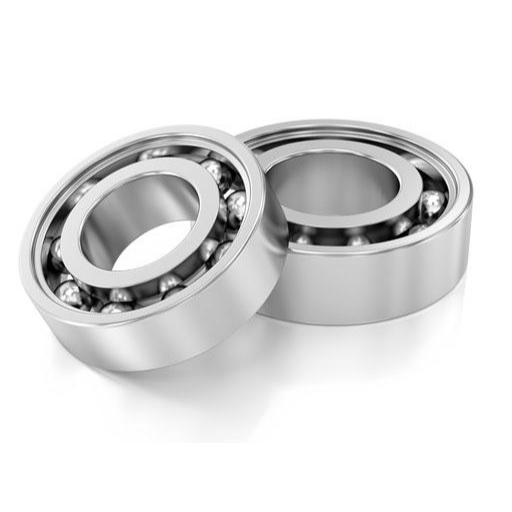
Identifying the Correct Dimensions for Your Needs
In any application assessing the bearing dimensions for optimal performance, level of wear, and operational efficiency is a critical task. This step requires evaluation of the system’s load and speed requirements in detail. Usually, bearings meant for high loads purposes come with bigger diameters. They also come with thicker cross-sections to combat stress and wear over the long run. On the other hand, high operational rotary speeds for a machine may call for lightweight and smaller bearings for reduced friction and heat creation.
Alongside, there are other important compliments such as balance and economics in relation to the spatial confines of the equipment. Measure carefully the shaft and housing spaces as the bearing should not be too tight or lose to hinder functionality. Moreover cutoff clearances and exact position requirements heavily affect the optimal operation of the component.
Once again, choosing a material affects the dimensions alongside compatibility. As an example, bearings made from stainless steel might be more favorable in domains needing high corrosion resistance, but might change in size due to load-bearing attributes. Areas that require extreme precision, like high-tech instruments or medical devices, tend to use miniaturized bearings that are reliable and accurate.
Evaluating these factor together, in addition to using the provided technical tables from the manufacturers, helps the engineers devise the most efficient bearing sizes to improve performance within the operational limitations.
Common Challenges in Sizing Miniature Bearings
The selection and sizing of miniature bearings is a multifaceted problem, from meeting operational needs to environmental conditions and material constraints that are to be considered simultaneously. The most critical challenge revolves around balancing the bearing’s size and sufficient load capacity. Most miniature bearings tend to struggle with providing sufficient space in footprint while having sufficient load handling ability, especially when it comes to dealing with dynamic or variable loads. Furthermore, the lack of achieving precision alignment is just as critical, as even the smallest degree of misalignment will cause increased wear, heightened vibration, as well as premature failure in fragile systems.
Material selection poses one such challenge as some applications require custom materials like stainless steel or ceramic that are attractive due to their ability to withstand corrosion, friction, or extremely high/low temperatures. Aligning these material properties with performance benchmarks such as speed and rotational accuracy inevitably drives the need for meticulious calculations and complex simulation models.
The selection process is made more challenging due to external factors like dust, chemicals, or moisture. The appropriate seals and lubricants must be selected to limit exposure and enhance performance, which further complicates the challenging task engineers are dealing with. In addition to that, assembly of miniature bearings with other system parts requires compatibility checks as well with stringent quality control measures, as which are required for optimal operations under the predetermined conditions.
Exploring the Different Materials: From Chrome Steel to Stainless Steel

Properties of Chrome Steel in Ball Bearings
Chrome steel, or bearing-grade steel, is best known for its application in ball bearings. It is classified as a high-carbon, high-chromium alloy due to Chrome Steel’s boasting qualities. Like bearing-grade steels (SAE 52100), chrome steel also possesses outstanding qualities. For example, chrome steel’s most notable property, its hardness. This usually ranges from 60 to 67 on the Rockwell Hardness Scale (HRC), depending on the treatment. This increased hardness allows chrome steel to withstand rigorous wear during prolonged periods of operation.
Chrome steel also has high fatigue strength. This is important when dealing with repetitive stress cycles that come with high loads and speeds. While chrome steel aids in the reduction of friction, making energy loss negligible, it further reduces internal heat generation, improving reliability during continuous operations. These bearings tend to show uniform reduction in volume or change in shape relative to temperature; hence, chrome steel bearings possess high dimensional stability, ensuring excellent performance under high temperatures.
While chrome steel showcases exceptional tensile strength and durability, the steel does not perform well when exposed to moisture or aggressive chemicals. With these conditions in mind, other coatings or materials such as stainless steel may be more suited. In the end, the preferred choice of chrome steel requires other steel or coating requires surrounding environment and situationally specific evaluations.
Advantages of Using Stainless Steel
The unparalleled attributes of stainless steel make it a sought-after material in a majority of industries because of its versatility and inert characteristics. Its exceptional corrosion resistance, which is one of its principal advantages, arises from chromium’s presence, which forms a passive layer of chromium oxide on the surface. This layer protects the steel from rusting and degrading, even in severely acidic or saline environments. This makes stainless steel suitable for marine, medical, and food processing industries where hygiene and equipment durability are of utmost importance.
Moreover, stainless steel has outstanding strength-to-weight ratios for architectural and engineering constructions, which allows for robust but lightweight constructions. It is also capable of enduring harsh conditions like along with high tensile strength and extreme temperatures in aerospace and chemical processing, which further enhances its value. You can find stainless steel in a majority of industries because it is 100 percent recyclable and a majority is made from pre-existed stainless steel, initiating circular economy movements and cutting down pollution.
Moreover, the modern look of stainless steel makes it appealing in consumer-grade products like appliances and fixtures, as it is elegant and contemporary in design. Additionally, the material requires very little upkeep, as its appearance over time can be preserved with simple routine cleaning. Given these benefits, stainless steel is remarkable for applications that need exceptional endurance, resilience, and performance in tough conditions.
Choosing Between Ceramic and Metal Options
Analyzing their properties, benefits, and drawbacks concerning the purpose at hand is vital when choosing between ceramic and metal materials. For example, ceramic materials have exceptional endurance, thermal stability, and resistance to high temperatures. This makes them perfect for areas with immense heat management such as the aerospace and automotive sectors or industrial processes. Moreover, being non corrosive and chemically inert protects ceramics, ensuring their longevity in aggressive chemically charged conditions. Although ceramics are useful, their application in fencing for high impact resistance poses challenges due to brittleness.
Metals like stainless steel and titanium are tectonically versatile, enduring structural and functional roles while possessing ductility and superior tensile strength. They prove to be extraordinarily useful and good in tough and resilient environments that are under mechanical stress. Unlike ceramics, metals are easier to shape, which leads to more intricate designs. Unfortunately, without protective coatings or specific alloys, like stainless steel, metals become oxidized over time, leading to corrosion, damaging metals’ usefulness.
At the end of the day, decisions about metals versus ceramics should consider factors such as temperature, mechanical stress, environment, and even cost. A material selection matrix is useful in comparing the options and allows an unbiased selection of materials based on performance and reliability.
What Makes a Precision Miniature Bearing?

The Role of Precision in Performance
Every miniature bearing’s performance is impacted by its level of precision. These parts are designed to function within harsh operating environments where friction is minimal and dependability must be maintained consistently. A bearing’s precision dictates how accurately it can rotate, its load-bearing limits, and if it can spin without losing efficiency at high speeds.
The most noticeable factor of a bearing’s precision is its dimensional tolerances. Bearings with tighter tolerances ensure deviation in size, which guarantees that imbalance and vibration during operation are at a minimum level. A smoother surface finish aids in creating sharper bearing surfaces and reducing friction as well as wear. Uniform load distribution across the bearing interface is made possible by geometry, which guarantees shape-wise optimization.
Market grade materials like high-grade alloys significantly impact precision. As the constituents of these materials are resistant to deformation, thermal changes, and even wear while remaining highly stable. Precision is also maintained by the right choice of lubricants. Superior grades of lubricants reduce friction and of anti-contamination aids ensure removal of contaminants.
All the classifications and ratings bears receive tend to correlate, meaning that those with higher ratings conform to stringent application requirements and have better performance. Thus, in bearing construction, achieving optimal performance and reliability requires precision.
How High-Speed Applications Affect Bearing Choice
High-speed applications take a toll on the system due to large forces and thermal stresses, therefore, require more careful considerations when selecting bearings. Some of them include bearing composition, lubrication configuration, and specific designs which facilitate minimal heat generation while ensuring mechanical stability during operation. Because of lower density, which cuts down centrifugal forces, and the ability to withstand extreme conditions, advanced materials like ceramic or hybrid bearings offer better performance in high-speed environments.
Choosing an appropriate lubrication strategy requires just as much attention. Increased friction, excessive heat, and, ultimately, premature failure arise from insufficient or degraded lubrication. In high speed operation, synthetic lubricants are recommended due to their exceptional thermal stability and more efficient oxidation resistance at elevated temperatures.
Other equally crucial factors include precision engineering, as using adequate monitoring tools to capture real-time analytics like temperature, vibration, and lubrication can enhance reliability and performance in high-speed conditions. It also involves bearings with angular contact ball bearing geometries designed to the close-tolerance specifications, which enable them to better handle the extraordinary speed and directional shifts characteristic of high-speed operations.
The Impact of Temperature on Precision Bearings
The temperature of the operating environment has an important impact on the performance, life, and reliability of precision bearings, particularly for demanding applications. Excessive heat results in thermal expansion and may cause the bearing components to overhaul or lose tolerances. This leads to higher internal clearance or preload which, in turn, lowers operational efficiency and aggravates the risk of failure.
Possibly, thermal inefficiency also decreases the effectiveness of lubrication. Extremely high temperatures also tend to raise the viscosity of the lubricant which leads to inadequate film coverage on bearing surfaces and raised wear and friction levels. Moreover, continuously staying at unsuitable temperatures leads to the breakdown of chemical structure of lubricating oils or greases resulting in increased contamination and added strain to operations.
To avoid the risks that arise from exposure to extreme temperatures, advanced thermal management techniques for bearing systems are very important. Adding heat shielding materials like ceramics, designing bearings with optimal thermal expansion coefficients, and using advanced cooling systems are standard procedures. Real-time temperature surveillance with integrated sensors supports timely intervention, which helps avoid unnecessary downtime associated with heating failures.
Understanding the Importance of Seals and Shields

Types of Seals and Their Applications
Seals are designed parts which aim to isolate contamination, secure lubricants, and provide non-failure functionality under actual stresses. They are commonly found within machinery, automotive systems, aerospace, and manufacturing sectors. With each having a certain purpose, seals are categorized into a few types tailored to meet defined operational needs. Below are the most common types and their uses:
- Radial Lip Seals: Radial lip seals serve as barriers for contaminant intrusion in rotating shafts and aid in lubricant retention. Made out of elastomers and PTFE, these seals perform best in dynamic environments in gearboxes, pumps, and electric motors, thus necessitating dependable performance.
- Mechanical Face Seals: Mechanical face seals consist of stationary and rotating opposing rings. Face seals are employed in systems that require high-pressure retention alongside minimal leakage, such as compressors, turbines, and hydraulic equipment. With their resistant construction, these seals are suitable for harsh conditions, even submerged or abrasive ones.
- O-Rings: O-rings are versatile sealing solutions providing dependable role in both static and dynamic applications. Composed mainly of rubber or silicone material, O-rings are applicable in everything from hydraulic systems to consumer electronics due to simplicity, strength, and functioning under high pressures.
- Contact Seals: In most types of heavy industry machinery like conveyor systems or farming equipment, contact seals are utilized to keep dirt and fluids from penetrating the machines. You will find that these seals are made for extremely abrasive conditions, and are built to ensure that damage is not done to the machine over time.
- Non-Contact Seals: These types of seals are devoid of contact, making them the best option in high-speed positions where heat and energy loss, as well as wear, should be minimized. Due to clever geometries, non-contact seals are used to restrict fluid or particle ingress. Turbines and aerospace systems are good examples of machinery that use these high-speed seals.
It is crucial to choose a seal type for a specific machinery type as it hinges on reliability, efficiency, and long-term use. Modern advances in seal systems, like real-time monitoring sensors, have made it easier to track the health of a machine as well as integrate self-regulating materials, which further aid in the machine’s health. The operating environment requirements need to be evaluated and considered before narrowing down to a certain machine with a low need for maintenance.
The Benefits of Rubber-Sealed Bearings
Used in mechanical and industrial settings, rubber-sealed bearings offer excellent protection against dust, dirt, and moisture due to their ability to protect. These bearings help ensure reliable operation under challenging conditions by robustly incorporating rubber seals that retain lubrication. The sealed structure aids in minimizing the ingress of foreign materials, so friction, premature wear, and the overall lifespan of the bearing are prolonged.
Furthermore, rubber sealed bearings require less maintenance compared to open bearings. Being self-contained allows for constant re-lubrication to be avoided which decreases the operational downtime. Enhanced sealing performance in temperature sensitive or undergoing static, dynamic, or load changes is possible with flexible and resilient properties of the rubber seals, making them furtherarde beneficial.
With merr advancements comes benefits modern applications of rubber sealed bearings. Withstanding use in the automotive, food processing, and heavy machinery industry, some rubber compounds were engineered to resist chemical exposure or high-temperature environments. Consistent operation bolsters the durable nature of these bearings while achieving cost-effective solutions in maintenance-minimal settings.
Using Shields for Protection and Longevity
Shields are vital for bearing assemblies as they add another line of defense, guarding against harmful dirt, grime, and moisture. Such external attacks, if successful, could wash away the lubrication and operational efficiency of the bearing. This might result in high maintenance costs due to wear and system failure, and other damages. To make sure that rotation resistance is at a minimum, shields are mostly made from either stainless steel or synthetic composites.
Caution is taken on modern shields to boost performance and incorporate advanced sealing methods such as labyrinth or contact seals. For example, high-speed applications with a focus on performance and durability can take advantage of almost frictionless labyrinth seals that block particle ingress thanks to elaborate pathways. Another example of superior shielding would be contact seals. These provide ample resistance and obstruction to rotation while maintaining tolerances that prevent excess drag.
In challenging conditions, the use of shields can greatly extend the operational lifetime of bearings. For instance, in the food processing sector, shields which are designed to ensure complete sterility prevent the bearings from being contaminated while enduring harsh cleaning cycles. In heavy machinery worksites, shields also buffer the impact of abrasive particles and relentless contact with the elements which lengthens the time between maintenance checks.
Integrating shields and high-performance lubricants, along with precision engineering, allow manufacturers to provide bearing solutions that optimally extend longevity while reducing operational interruptions. As a result, clients incur lower costs and industrial workplaces enhance their efficiency.
Frequently Asked Questions (FAQs)
Q: What are miniature ball bearings, and how do they differ from standard bearings?
A: Miniature ball bearings are small bearings that typically have a diameter of less than 30mm. They are designed for high precision and performance in compact spaces, differing from standard bearings primarily in their size and application. They often feature deep groove designs and come in a variety of sizes, including metric measurements like 8mm x 22mm.
Q: Why are steel ball bearings preferred in many applications?
A: Steel ball bearings are preferred due to their strength, durability, and ability to withstand high loads and speeds. The steel ball construction ensures longevity and reliability, making them ideal for demanding environments and precision applications.
Q: What are the common applications of miniature ball bearings in the industry?
A: Miniature ball bearings are commonly used in a wide range of industries, including motors, flow meters, and instruments requiring precise movements. They are also utilized in applications needing a small ball or mini ball, such as specialized machinery and small electronic devices.
Q: How does a deep groove design benefit miniature ball bearings?
A: Deep groove designs in miniature ball bearings allow for higher load capacities and efficient handling of axial and radial loads. This design provides better stability and performance in high-speed applications where precision is critical.
Q: What materials are commonly used in the construction of miniature ball bearings?
A: Common materials for miniature ball bearings include steel and nylon. Steel is often used for the balls and races due to its strength and durability, while nylon may be used for retainers to reduce friction and noise.
Q: How important is the metric system in the sizing of miniature ball bearings?
A: The metric system is crucial for the accurate sizing of miniature ball bearings, as it provides standardized measurements like 9mm, 7mm, or 22mm. This allows for precise compatibility and interchangeability in international applications.
Q: What is the significance of flanges in miniature ball bearings?
A: Flanges in miniature ball bearings provide additional support and stability, helping to secure the bearing in place. They are particularly useful in applications where axial loads are present, enhancing the overall performance and reliability of the bearing.
Q: Can miniature ball bearings be customized for specific applications?
A: Yes, miniature ball bearings can be customized in terms of size, material, and design to meet specific application requirements. Customization options may include variations like extended inner rings or specialized retainer materials to suit unique operational needs.
Q: How does relubrication affect the performance of miniature ball bearings?
A: Relubrication is essential for maintaining optimal performance and extending the lifespan of miniature ball bearings. It reduces friction, minimizes wear, and prevents contamination, ensuring smooth operation and reliability over time.
UCTH213-40J-300 with Setscrew(inch)
CNSORDERNO: Normal-duty(2)
TOGN: UCTH213-40J-300
SDI: B-R1/8
SD: 2 1/2
UCTH212-39J-300 with Setscrew(inch)
CNSORDERNO: Normal-duty(2)
TOGN: UCTH212-39J-300
SDI: B-R1/8
SD: 2 7/16
UCTH212-38J-300 with Setscrew(inch)
CNSORDERNO: Normal-duty(2)
TOGN: UCTH212-38J-300
SDI: B-R1/8
SD: 2 3/8
UCTH212-36J-300 with Setscrew(inch)
CNSORDERNO: Normal-duty(2)
TOGN: UCTH212-36J-300
SDI: B-R1/8
SD: 2 1/4
UCTH211-35J-300 with Setscrew(inch)
CNSORDERNO: Normal-duty(2)
TOGN: UCTH211-35J-300
SDI: B-R1/8
SD: 2 3/16
UCTH211-34J-300 with Setscrew(inch)
CNSORDERNO: Normal-duty(2)
TOGN: UCTH211-34J-300
SDI: B-R1/8
SD: 2 1/8











